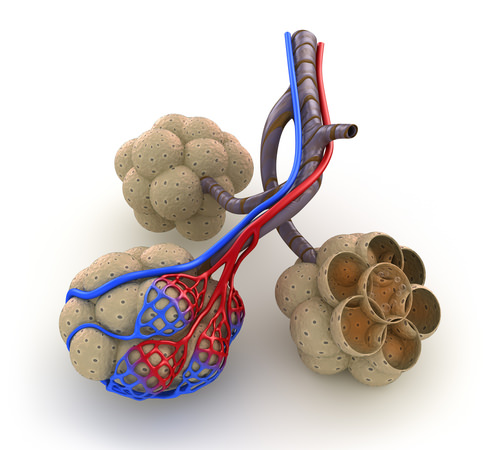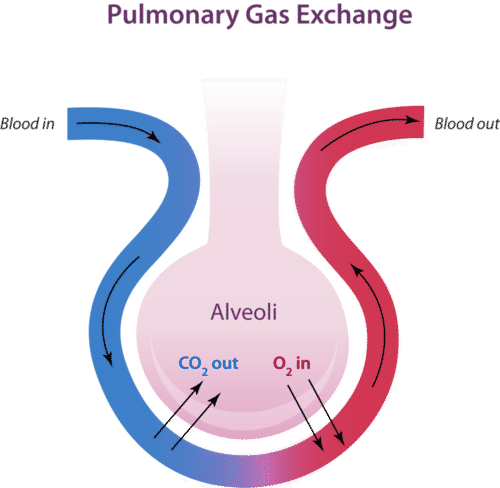13.24: Breathing
- Page ID
- 13299
\( \newcommand{\vecs}[1]{\overset { \scriptstyle \rightharpoonup} {\mathbf{#1}} } \)
\( \newcommand{\vecd}[1]{\overset{-\!-\!\rightharpoonup}{\vphantom{a}\smash {#1}}} \)
\( \newcommand{\dsum}{\displaystyle\sum\limits} \)
\( \newcommand{\dint}{\displaystyle\int\limits} \)
\( \newcommand{\dlim}{\displaystyle\lim\limits} \)
\( \newcommand{\id}{\mathrm{id}}\) \( \newcommand{\Span}{\mathrm{span}}\)
( \newcommand{\kernel}{\mathrm{null}\,}\) \( \newcommand{\range}{\mathrm{range}\,}\)
\( \newcommand{\RealPart}{\mathrm{Re}}\) \( \newcommand{\ImaginaryPart}{\mathrm{Im}}\)
\( \newcommand{\Argument}{\mathrm{Arg}}\) \( \newcommand{\norm}[1]{\| #1 \|}\)
\( \newcommand{\inner}[2]{\langle #1, #2 \rangle}\)
\( \newcommand{\Span}{\mathrm{span}}\)
\( \newcommand{\id}{\mathrm{id}}\)
\( \newcommand{\Span}{\mathrm{span}}\)
\( \newcommand{\kernel}{\mathrm{null}\,}\)
\( \newcommand{\range}{\mathrm{range}\,}\)
\( \newcommand{\RealPart}{\mathrm{Re}}\)
\( \newcommand{\ImaginaryPart}{\mathrm{Im}}\)
\( \newcommand{\Argument}{\mathrm{Arg}}\)
\( \newcommand{\norm}[1]{\| #1 \|}\)
\( \newcommand{\inner}[2]{\langle #1, #2 \rangle}\)
\( \newcommand{\Span}{\mathrm{span}}\) \( \newcommand{\AA}{\unicode[.8,0]{x212B}}\)
\( \newcommand{\vectorA}[1]{\vec{#1}} % arrow\)
\( \newcommand{\vectorAt}[1]{\vec{\text{#1}}} % arrow\)
\( \newcommand{\vectorB}[1]{\overset { \scriptstyle \rightharpoonup} {\mathbf{#1}} } \)
\( \newcommand{\vectorC}[1]{\textbf{#1}} \)
\( \newcommand{\vectorD}[1]{\overrightarrow{#1}} \)
\( \newcommand{\vectorDt}[1]{\overrightarrow{\text{#1}}} \)
\( \newcommand{\vectE}[1]{\overset{-\!-\!\rightharpoonup}{\vphantom{a}\smash{\mathbf {#1}}}} \)
\( \newcommand{\vecs}[1]{\overset { \scriptstyle \rightharpoonup} {\mathbf{#1}} } \)
\( \newcommand{\vecd}[1]{\overset{-\!-\!\rightharpoonup}{\vphantom{a}\smash {#1}}} \)
\(\newcommand{\avec}{\mathbf a}\) \(\newcommand{\bvec}{\mathbf b}\) \(\newcommand{\cvec}{\mathbf c}\) \(\newcommand{\dvec}{\mathbf d}\) \(\newcommand{\dtil}{\widetilde{\mathbf d}}\) \(\newcommand{\evec}{\mathbf e}\) \(\newcommand{\fvec}{\mathbf f}\) \(\newcommand{\nvec}{\mathbf n}\) \(\newcommand{\pvec}{\mathbf p}\) \(\newcommand{\qvec}{\mathbf q}\) \(\newcommand{\svec}{\mathbf s}\) \(\newcommand{\tvec}{\mathbf t}\) \(\newcommand{\uvec}{\mathbf u}\) \(\newcommand{\vvec}{\mathbf v}\) \(\newcommand{\wvec}{\mathbf w}\) \(\newcommand{\xvec}{\mathbf x}\) \(\newcommand{\yvec}{\mathbf y}\) \(\newcommand{\zvec}{\mathbf z}\) \(\newcommand{\rvec}{\mathbf r}\) \(\newcommand{\mvec}{\mathbf m}\) \(\newcommand{\zerovec}{\mathbf 0}\) \(\newcommand{\onevec}{\mathbf 1}\) \(\newcommand{\real}{\mathbb R}\) \(\newcommand{\twovec}[2]{\left[\begin{array}{r}#1 \\ #2 \end{array}\right]}\) \(\newcommand{\ctwovec}[2]{\left[\begin{array}{c}#1 \\ #2 \end{array}\right]}\) \(\newcommand{\threevec}[3]{\left[\begin{array}{r}#1 \\ #2 \\ #3 \end{array}\right]}\) \(\newcommand{\cthreevec}[3]{\left[\begin{array}{c}#1 \\ #2 \\ #3 \end{array}\right]}\) \(\newcommand{\fourvec}[4]{\left[\begin{array}{r}#1 \\ #2 \\ #3 \\ #4 \end{array}\right]}\) \(\newcommand{\cfourvec}[4]{\left[\begin{array}{c}#1 \\ #2 \\ #3 \\ #4 \end{array}\right]}\) \(\newcommand{\fivevec}[5]{\left[\begin{array}{r}#1 \\ #2 \\ #3 \\ #4 \\ #5 \\ \end{array}\right]}\) \(\newcommand{\cfivevec}[5]{\left[\begin{array}{c}#1 \\ #2 \\ #3 \\ #4 \\ #5 \\ \end{array}\right]}\) \(\newcommand{\mattwo}[4]{\left[\begin{array}{rr}#1 \amp #2 \\ #3 \amp #4 \\ \end{array}\right]}\) \(\newcommand{\laspan}[1]{\text{Span}\{#1\}}\) \(\newcommand{\bcal}{\cal B}\) \(\newcommand{\ccal}{\cal C}\) \(\newcommand{\scal}{\cal S}\) \(\newcommand{\wcal}{\cal W}\) \(\newcommand{\ecal}{\cal E}\) \(\newcommand{\coords}[2]{\left\{#1\right\}_{#2}}\) \(\newcommand{\gray}[1]{\color{gray}{#1}}\) \(\newcommand{\lgray}[1]{\color{lightgray}{#1}}\) \(\newcommand{\rank}{\operatorname{rank}}\) \(\newcommand{\row}{\text{Row}}\) \(\newcommand{\col}{\text{Col}}\) \(\renewcommand{\row}{\text{Row}}\) \(\newcommand{\nul}{\text{Nul}}\) \(\newcommand{\var}{\text{Var}}\) \(\newcommand{\corr}{\text{corr}}\) \(\newcommand{\len}[1]{\left|#1\right|}\) \(\newcommand{\bbar}{\overline{\bvec}}\) \(\newcommand{\bhat}{\widehat{\bvec}}\) \(\newcommand{\bperp}{\bvec^\perp}\) \(\newcommand{\xhat}{\widehat{\xvec}}\) \(\newcommand{\vhat}{\widehat{\vvec}}\) \(\newcommand{\uhat}{\widehat{\uvec}}\) \(\newcommand{\what}{\widehat{\wvec}}\) \(\newcommand{\Sighat}{\widehat{\Sigma}}\) \(\newcommand{\lt}{<}\) \(\newcommand{\gt}{>}\) \(\newcommand{\amp}{&}\) \(\definecolor{fillinmathshade}{gray}{0.9}\)
Grapes. Why? What do these have in common with a breath of air?
Below are the parts of the lungs where oxygen moves from the lungs into the blood. If the alveoli below were purple, they could resemble a bunch of grapes. Of course, as the alveoli are in the lungs, they must be very small to provide enough area for the exchange of gases. In fact, there are about 300 million alveoli in the adult lung.

Journey of a Breath of Air
Take in a big breath of air through your nose. As you inhale, you may feel the air pass down your throat and notice your chest expand. Now exhale and observe the opposite events occurring. Inhaling and exhaling may seem like simple actions, but they are just part of the complex process of respiration, which includes these four steps:
- Ventilation
- Pulmonary gas exchange
- Gas transport
- Peripheral gas exchange
Ventilation
Respiration begins with ventilation. This is the process of moving air in and out of the lungs. The lungs are the organs in which gas exchange takes place between blood and air.
- Air enters the respiratory system through the nose. As the air passes through the nasal cavity, mucus and hairs trap any particles in the air. The air is also warmed and moistened so it won’t harm delicate tissues of the lungs.
- Next, the air passes through the pharynx, a long tube that is shared with the digestive system. A flap of connective tissue called the epiglottis closes when food is swallowed to prevent choking.
- From the pharynx, air next passes through the larynx, or voice box. The larynx contains vocal cords, which allow us to produce vocal sounds.
- After the larynx, air moves into the trachea, or windpipe. This is a long tube that leads down to the chest.
- In the chest, the trachea divides as it enters the lungs to form the right and left bronchi. The bronchi contain cartilage, which prevents them from collapsing. Mucus in the bronchi traps any remaining particles in air. Tiny, hair-like structures called cilia line the bronchi and sweep the particles and mucus toward the throat so they can be expelled from the body.
- Finally, air passes from the bronchi into smaller passages called bronchioles. The bronchioles end in tiny air sacs called alveoli.
Pulmonary Gas Exchange
Pulmonary gas exchange is the exchange of gases between inhaled air and the blood. It occurs in the alveoli of the lungs. Alveoli (singular, alveolus) are grape-like clusters surrounded by networks of thin-walled pulmonary capillaries. After you inhale, there is a greater concentration of oxygen in the alveoli than in the blood of the pulmonary capillaries, so oxygen diffuses from the alveoli into the blood across the capillaries (see Figure below). Carbon dioxide, in contrast, is more concentrated in the blood of the pulmonary capillaries than in the alveoli, so it diffuses in the opposite direction.
 Alveoli are tiny sacs in the lungs where gas exchange takes place.
Alveoli are tiny sacs in the lungs where gas exchange takes place.Gas Transport
After the blood in the pulmonary capillaries becomes saturated with oxygen, it leaves the lungs and travels to the heart. The heart pumps the oxygen-rich blood into arteries, which carry it throughout the body. Eventually, the blood travels into capillaries that supply body tissues. These capillaries are called peripheral capillaries.
Peripheral Gas Exchange
The cells of the body have a much lower concentration of oxygen than does the oxygenated blood in the peripheral capillaries. Therefore, oxygen diffuses from the peripheral capillaries into body cells. Carbon dioxide is produced by cells as a byproduct of cellular respiration, so it is more concentrated in the cells than in the blood of the peripheral capillaries. As a result, carbon dioxide diffuses in the opposite direction.
Back to the Lungs
The carbon dioxide from body cells travels in the blood from the peripheral capillaries to veins and then to the heart. The heart pumps the blood to the lungs, where the carbon dioxide diffuses into the alveoli. Then, the carbon dioxide passes out of the body through the other structures of the respiratory system, bringing the process of respiration full circle.
Gas Exchange and Homeostasis
Gas exchange is needed to provide cells with the oxygen they need for cellular respiration. Cells cannot survive for long without oxygen. Gas exchange is also needed to carry away carbon dioxide waste. Some of the carbon dioxide in the blood dissolves to form carbonic acid, which keeps blood pH within a normal range.
Blood pH may become unbalanced if the rate of breathing is too fast or too slow. When breathing is too fast, blood contains too little carbon dioxide and becomes too basic. When breathing is too slow, blood contains too much carbon dioxide and becomes too acidic. Clearly, to maintain proper blood pH, the rate of breathing must be regulated.
Further Reading
Summary
- Respiration begins with ventilation, the process of moving air into and out of the lungs.
- Gas exchange in the lungs takes place across the thin walls of pulmonary arteries in tiny air sacs called alveoli.
- Oxygenated blood is transported by the circulatory system from lungs to tissues throughout the body.
- Gas exchange between blood and body cells occurs across the walls of peripheral capillaries.
- Gas exchange helps maintain homeostasis by supplying cells with oxygen, carrying away carbon dioxide waste, and maintaining proper pH of the blood.
Review
- Outline the pathway of a breath of air from the nose to the alveoli.
- Describe how pulmonary gas exchange occurs.
- What is peripheral gas exchange.
- Sometimes people who are feeling anxious breathe too fast and become lightheaded. This is called hyperventilation. Hyperventilation can upset the pH balance of the blood, resulting in blood that is too basic. Explain why.
| Image | Reference | Attributions |
 |
[Figure 1] | License: CC BY-NC |
 |
[Figure 2] | Credit: Patrick J. Lynch, medical illustrator Source: commons.wikimedia.org/w/index.php?search=lungs&title=Special:Search&go=Go&ns0=1&ns6=1&ns12=1&ns14=1&ns100=1&ns106=1&searchToken=6v9palshd46vgv5fahu29uwfc#%2Fmedia%2FFile%3ABronchial_anatomy.jpg License: CC BY 2.5 |
 |
[Figure 3] | Credit: Hana Zavadska Source: CK-12 Foundation License: CC BY-NC 3.0 |

